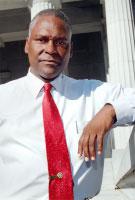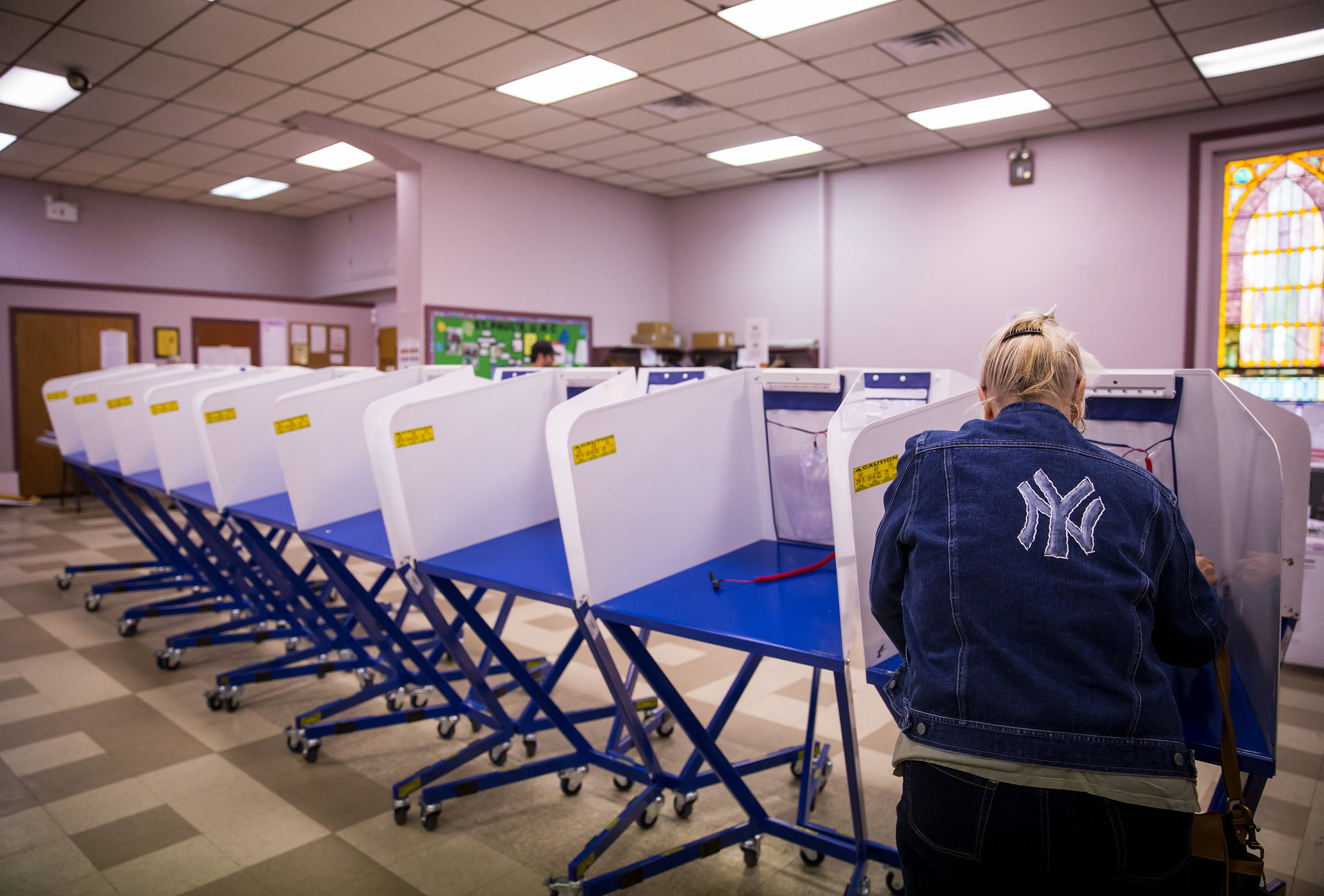During a well-attended and lively convention held at the SVA Theatre in Manhattan on Monday, August 12th, the Judicial Delegates of the 1st Judicial District met to nominate judicial candidates for State Supreme Court. After all votes were counted, the Manhattan Democratic Party was proud to announce that the following candidates were selected as the Democratic Nominees for seats to be filled on the November 5th election:
Hon. Martin Shulman
Hon. Shawn Kelly
Hon. Jennifer Schechter
Announcing the Results of the 2019 Supreme Court Independent Screening Panel
On August 1, 2019, the Independent Judicial Screening Panel for Supreme Court reported the following candidates as most highly qualified for two (2) Supreme Court vacancies. On behalf of the Manhattan Democratic Party, County Leader Keith L.T. Wright and Judiciary Co-Chairs Curtis Arluck & Louise Dankberg sincerely thank the panel and its administrator for their diligent work; and we congratulate the candidates.
Hon. Shawn Kelly
Hon. Jennifer Schechter
Hon. Carol Sharpe
Hon. Tatanisha James
Hon. Gerald Lebovits
Hon. Paul Goetz
Hon. Melissa Crane
Hon. Lisa Sokoloff
Hon. Machelle Sweeting
Hon. David Cohen
Hon. Dakota Ramseur
Hon. Sabrina Kraus
Hon. Martin Shulman
Hon. Louis Nock
Hon. JJ Kelley
Hon. Cori Weston
Hon. Lyle Frank
Hon. Margaret Chan
Hon. Althea Drysdale
Support the Manhattan Democrats’ Judicial Nominees
Join the Manhattan Democrats and support our efforts to maintain the most diverse judicial bench in the nation! On Thursday, August 1, 2019, the results of the Supreme Court independent screening panel will be released. Purchase your tickets below!
2019 Supreme Court Independent Screening Panel
The New York County Democratic Committee has announced the formation of an Independent Screening Panel to report on the qualifications of candidates seeking the nomination of the Democratic Party for two (2) vacancies on the New York State Supreme Court to be elected in the November 2019 general election. The heads of numerous bar associations, community organizations and law schools have been invited to nominate members of the panel, which will be directed to report a total of no more than the six (6) most highly qualified candidates for the two vacancies.
Candidates for the Court may obtain applications from Ms. Shirley Kornreich, the panel administrator for the New York County Democratic Committee, via email at manhattandems@gmail.com. The deadline for submitting completed applications is June 10, 2019, 12 P.M. Questions concerning this year’s panel should be directed to Ms. Kornreich via email.
The panel designees and their designating organizations are as follows:
Armenian Bar Association, Irina Hovhannisyan
Asian American Bar Association of New York, Tristan Loanzon
Asian Americans for Equality, Timothy Wong
Brehon Law Society, Charles Martin
Columbia Law School, Colleen Shanahan
Columbian Lawyers Association, Rosanne Elena Felicello
Defense Association of New York, John McDonough
Dominican Bar Association, Shantel Castro
Hellenic Lawyers Association, Chrisanthy Zapantis
Jewish Community Relations Council of New York, Inc., Steven Perelman
Jewish Lawyers Guild, Shoshana Bookson
Legal Services Staff Association, Catherine Frizell
Lesbian, Gay, Bisexual and Transgender Bar Association of Greater New York (LeGaL), Jaime Leggett
Metropolitan Black Bar Association, Anton Robinson
Mid-Manhattan Branch of the NAACP, Deborah Yates
Muslim Bar Association of New York City, Yasmin Dwedar
New York State Trial Lawyers Association, Marc Dittenhoefer
New York Women’s Bar Association, Dawn Cardi
Northern Manhattan Improvement Corporation, Marc Valinoti
Women Trial Lawyers Caucus, Helene Blank
2018 Civil Court Independent Screening Panel
February 17, 2018
The New York County Democratic Committee has announced the formation of an Independent Screening Panel to report on candidates for the nomination of the Democratic Party for two (2) vacancies on the New York County Civil Court and two (2) Municipal Civil Court District vacancies, which will be filled in the November general election. The heads of numerous bar associations, community organizations and law schools have been invited to nominate members of the panel, which will be directed to report a total of no more than the twelve most highly qualified candidates for the four vacancies.
Candidates for the Court may obtain applications from the administrator of the panel, Mr. Joshua Brian Irwin, via email at joshuabrianirwin@gmail.com beginning February 17, 2018. The deadline for submitting completed applications is March 5, 2018, 12 P.M. Questions concerning this year’s panel should be directed via email to the Panel Administrator or the New York County Democratic Committee office at (212) 687-6540.
2017 Demmy Awards
Please join County Leader Keith L.T. Wright and the New York County Democratic Committee for the Demmy Awards on Monday, July 17th, 2017 at 7PM at School of Visual Arts Theatre- 333 West 23rd Street.
The Demmys is Manhattan’s premier Democratic event to honor those New Yorkers who make our city, our state and our nation great.
For more information and to purchase tickets online CLICK HERE
Have questions? Need help? Email us at thedemmys@gmail.com.
THE DEMMY AWARDS NOMINATION PROCESS IS NOW OPEN!
Know someone who you would like to nominate for Manhattan Democrat of the Year or Young Democrat of the Year? Great! Submit a nomination by emailing us at thedemmys@gmail.com with the word “nomination” in the subject line.
Would you like to see your club win a Demmy this year? Go for it! Send us your nomination at thedemmys@gmail.com with “club of the year” in the subject line.
The nominating process closes on July 6th at 12PM. Don’t delay send in your nominations today!
2017 Endorsements of the New York County Democratic Committee
On May 17, 2017 the New York County Democratic Committee Executive Board met to vote on endorsements for city-wide and county-wide elections. Below is the list of endorsed candidates. You can see the full minutes of the meeting here.
- Mayor – Bill DeBlasio
- Comptroller – Scott Stringer
- Manhattan DA – Cy Vance
- Manhattan BP – Gale Brewer
- County-wide Civil Court Judge – Phaedra Perry
- County-wide Civil Court Judge – Richard Tsai
Welcome Democrats!

PROGRESS- LEADERSHIP- INCLUSION- ACTION
Welcome to the New York County Democratic Committee website! Here you’ll find important information regarding upcoming events, relevant news and photos, and information about how to get involved.
New York County is the most historic and important democratic region in America. Each day we carry the banner for progress while fighting to make our borough one of inclusivity and pride. We are elated to welcome you to that fight.
Democrats believe that all people deserve the ability to pursue their dreams and fulfill their potential. We fiercely protect and promote access to opportunity for all New Yorkers, and we believe in lending a hand when necessary and unifying to meet our community’s collective challenges.
Join us.
Keith L.T. Wright
County Leader, New York County Democratic Committee
Why All The Elections?
The next Election is June 28th for the Congressional Primary. Why are there so many this year?
Although the NY Presidential Primary was concluded in April, our State still has three more elections ahead of it:
– A Congressional Primary Tuesday, June 28
– A State Primary Tuesday, September 13
– The General Election Tuesday, November 8
Why all the elections? The Presidential Primary is set by the Democratic Party and has been around the same time every four years for decades; that was expected. The General Election, too, happens in early November every four years.
The packed schedule is the result of Congressional Primary splitting with the State Primary. In 2009, Congress passed the Military and Overseas Voter Empowerment (MOVE) Act to ensure military personnel (and anyone else abroad) would get their absentee ballots with enough time to vote.
Specifically, the MOVE Act requires ballots to be sent out 45 days before a Federal election (primary or general). And, of course, you can’t send out a General Election ballot until you know who won the primary. Since the State Primary, Sept 13, is not 45 days before Federal General Election a new date was required. The legislature decided to make it the old State Primary date of June 28.
That means this coming Tuesday there are four Manhattan Districts with primaries:
- 7 (Nydia Velazquez); Lower Manhattan
- 10 (Jerry Nadler); Lower/Midtown Manhattan mainly W. side
- 12 (Carolyn Maloney); Lower/Upper Manhattan mainly E. side
- 13 (Former Charlie Rangel); Harlem
Find your congressional district here.
You might wonder “why not move both primaries to a new day?” Well, that was tried. It passed the Democratic Assembly and failed in the Republican Senate. Sadly, this will likely result in much lower turnout. Unless, of course, you help us get people out to vote!

Let’s hope voter turnout doesn’t suffer.
5/22/16 Executive Board Meeting Recap
This past Sunday, May 22, the County Executive Board met to endorse candidates in the primary election for Civil Court Judge and approve the Party Call.
Civil Court Endorsements
Josh Hanshaft Esq. and Emily Morales-Minerva Esq. have received the endorsement of the NY County Party for the Countywide Civil Court vacancies.
They will run in the upcoming primary with the support of the Democratic Clubs and county organization which will help them petition and turn out voters for their win.
Should they win the primary, they will then proceed to the general election as the Democratic candidate.
The Party Call
The “Party Call” lists all of the available Judicial Delegate, Judicial Delegate Alternate and State Committee positions.These party positions will be elected during the Primary in September.
Judicial Delegates are proportional to the Democratic voter turnout (how many ppl vote for the Dem) in the last Gubernatorial election by district.
State Committee is two per Assembly District (Male and Female).
Meeting Live Tweets
Meeting Live Tweets

